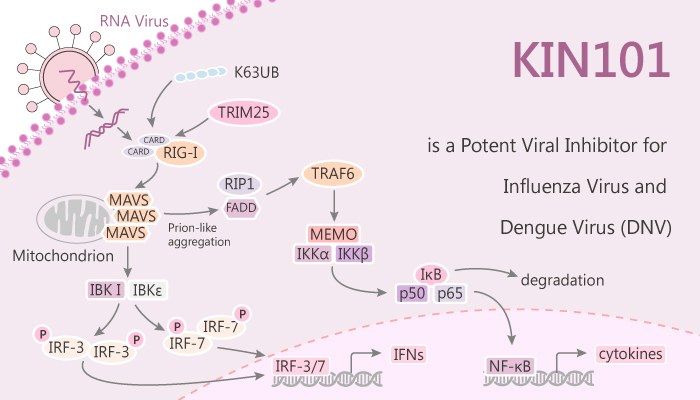RNA virus represents an enormous public health problem. Although drug therapy is essential to mitigate the significant morbidity and mortality associated with these viruses, the number of antiviral drugs is limited and many are poorly effective. Additionally, most RNA viruses have small genomes with few viral targets. Therefore, stimulating or manipulating the host innate antiviral response is a good target. It even a more advantageous approach compares to the traditional approach.
when cellular pathogen-recognition receptor proteins, such as RIG-I, MDA5, and TLRs engage specific pathogen-associated molecular patterns, the innates antiviral response will initiate.
RIG-I is a cytosolic pathogen-recognition receptor. It is important for triggering the RNA virus’s immunity. Besides, Nucleic acid-like molecules are the only ligands of RIG-I. The ligands bind to RIG-I, thereby allowing RIG-I to signal downstream through its tandem caspase activation and recruitment domains.
In this article, we will introduce an isoflavone agonist of IRF-3 dependent signaling, KIN101.

In MRC5 cells, KIN 101 causes a significant decrease in the NP protein abundance. And it leads to a dose-dependent decrease in influenza virus infection. In Huh7 cells, KIN 101 shows a >1 log decrease in HCV RNA levels. This compound has a significant and dose-dependent effect on the formation of foci and has an IC50 of 0.2 μM.
In conclusion, KIN101 is an isoflavone agonist of IRF-3 dependent signaling. It is also a potent RNA viral inhibitor with IC50s of 2 μM, >5 μM for influenza virus and Dengue virus (DNV), respectively.
RIG-I pathway agonists have a narrower mechanism of action. These agonists limit the stimulation of a small number of pathways rather than the entire response.
Thereby, KIN 101 has a narrower mechanism of action. It limits the stimulation of a small number of pathways rather than the entire response. All in all, KIN 101 provides important information for therapeutic development as well as provide insight into their mechanism of action.
Reference:
Bedard KM, et al. J Virol. 2012 Jul;86(13):7334-44.